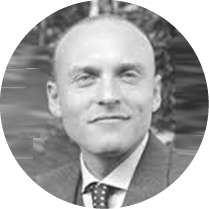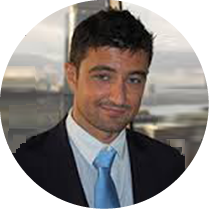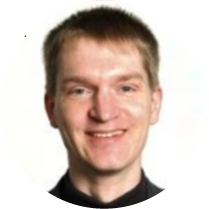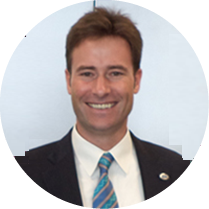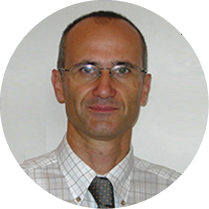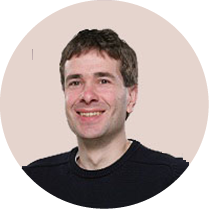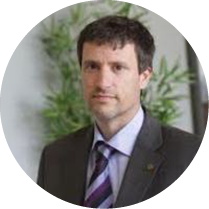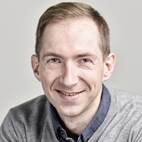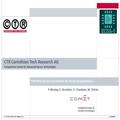
5th International Electronic Conference on Sensors and Applications
Part of the International Electronic Conference on Sensors and Applications series
15–30 November 2018
- Go to the Sessions
- Event Details
Welcome from the Chairs
All participants of ECSA-5 are welcome to submit the extended work to the Sensors Special Issue "Selected Papers from the 5th International Electronic Conference on Sensors and Applications".
We gladly announce that Dr. Babak Moaveni (Tufts University, USA), Dr. Pascal Nicolay (Carinthian Tech Research, Austria) and Dr. Michael Ortner (Carinthian Tech Research, Austria) as our keynote speakers.
We are pleased to announce Dr. Rosa Ma Alsina-Pages, Dr. Jiri Pribil and Dr. Antonella Daniela Pontoriero's papers were awarded the ECSA-5 Best Paper Award in 2018.
We are pleased to announce the 5th International Electronic Conference on Sensors and Applications. After the success of the four editions from 2014 to 2017, this year edition will focus on 4 thematic areas where sensors are changing science:
- Chemo and Biosensors (Session A)
- Physical Sensors (Session B)
- Sensor Networks (Session C)
- Applications (Session D)
There will be 4 specific sessions:
- Smart Cities (Specific Session S1)
- Smart Sensing Systems and Structures (Specific Session S2)
- Structural Health Monitoring Technologies and Sensor Networks (Specific Session S3)
- Wearable Sensors (Specific Session S4)
and also a Poster session. Posters can be presented without an accompanying proceedings paper and will be available online on this website during and after the e-conference. However, they will not be added to the proceedings of the conference.
Participants will have the opportunity to examine, explore and critically engage with issues and advances in these areas. We hope to facilitate discussions and exchange within the community.
This event will solely be an online proceeding which allows the participation from all over the world with no concerns of travel and related expenditures. This type of conference is particularly appropriate and useful because research concerned with sensors is progressing rapidly. An electronic conference provides a platform for rapid and direct exchanges about the latest research findings and novel ideas. The participation as well as the "attendance" of this online conference is free of charge.
The 5th International Electronic Conference on Sensors and Applications will be held at https://ecsa-5.sciforum.net/, on a platform developed by MDPI to organize electronic conferences.
The 5th International Electronic Conference on Sensors and Applications is sponsored by MDPI and the scientific journals Sensors. Accepted papers will be published in the proceedings of this e-conference, and selected papers will be published in Sensors with a 20% discount off the APC.
Sensors is an Open Access publication journal of MDPI in the field of the science and technology of sensors and biosensors.
We hope the community will share this enthusiasm and help making this 5th edition a success—for many to come in the future.
The Chairs of the 5th International Electronic Conference on Sensors and Applications.
|
Dr. Stefano Mariani |
Dr. Stefano Mariani received an M.S. degree (cum laude) in civil engineering in 1995, and a Ph.D. degree in structural engineering in 1999; both degrees are from the Polytechnic University of Milan. He is currently an associate professor at the Department of Civil and Environmental Engineering of the Polytechnic University of Milan. He was a research scholar at the Danish Technical University in 1997, an adjunct professor at Penn State University in 2007, and a visiting professor at the Polytechnic Institute of New York University in 2009. He is a member of the Editorial Boards of Algorithms, International Journal on Advances in Systems and Measurements, Inventions, Machines, Micro and Nanosystems, Micromachines, and Sensors. He has been a recipient of the Associazione Carlo Maddalena Prize for graduate students (1996), and of the Fondazione Confalonieri Prize for PhD students (2000). His main research interests are: the reliability of MEMS that are subject to shocks and drops; the structural health monitoring of composite structures through MEMS sensors; numerical simulations of ductile fracture in metals and of quasi-brittle fracture in heterogeneous and functionally graded materials; extended finite element methods; the calibration of constitutive models via extended and sigma-point Kalman filters; and multi-scale solution methods for dynamic delamination in layered composites. |
|
Dr. Francesco Ciucci |
Dr. Francesco Ciucci is an associate professor in Mechanical and Aerospace Engineering and Chemical and Biological Engineering at the Hong Kong University of Science and Technology. He received his Ph.D. in Engineering from the California Institute of Technology, where he was supported by a Rotary Ambassadorial Scholarship and a Bechtel Fellowship. He did his postdoc at the University of Heidelberg’s Institute of Scientific Computing, where he received a Heidelberg Graduate School postdoctoral fellowship and a Marie Curie Reintegration Grant. Prior to that, he obtained a dual M.Sc. degree in Applied Mathematics/Applied Physics at the Ecole Centrale Paris, France and in Aerospace Engineering at the Polytechnic University of Milan, Italy. His current research interests include the development of batteries and fuel cells. |
|
Dr. Dirk Lehmhus |
Dr. Dirk Lehmhus received his mechanical engineering diploma based on studies (at Volkswagen’s central laboratory) dedicated to the galvanic corrosion of magnesium alloys. He joined Fraunhofer IFAM in 1998, and has been working on metallic foams and structures since then. Dr. Lehmhus obtained a PhD in production technology at Bremen University for studies concerning the optimization of aluminum foam production processes and properties. From 2006 to 2009, he lectured on “Materials Science and Mechanics” at the University of Applied Science (FH) Bremen. In May 2009, he moved to the University of Bremen to become managing director of its Scientific Center ISIS (Integrated Solutions in Sensorial Structure Engineering), the foundation of which he helped organize. The center is dedicated to the development of sensorial materials and sensor-equipped structures. Since 2009, he has been regularly involved in topic and symposium coordination at the Euromat conference series, with a special focus on materials with transport applications. |
|
Dr. Tom Messervey |
Dr. Tom Messervey has over 20 years of engineering experience, which includes military service in the US Army Corps of Engineers, industrial experience with the Italian Engineering Company, D’Appolonia, teaching excellence at the United States Military Academy at West Point, and coaching services as the EU Facilitator for the Intelligent Manufacturing Systems program (www.ims.org). He serves as an expert for the European Commission in textiles, manufacturing, and energy efficiency. His research interests focus on using sensor data to make better engineering decisions across design, assessment, maintenance, inspections, and energy management to include machine learning. He is a member of the International Association of Bridge Maintenance and Safety (IABMAS), the International Association of Life Cycle Civil Engineering (IALCCE), and a technical reviewer for the International Journal of Safety and Security Engineering and the Journal of Structure and Infrastructure Engineering. |
|
Dr. Alberto Vallan |
Dr. Alberto Vallan received the M.S. degree in Electronic Engineering from the Politecnico di Torino, Italy, in 1996 and the Ph.D. degree in Electronic Instrumentation from the University of Brescia, Italy, in 2000. He is currently an Associate Professor in Electrical and Electronic Measurements with the Department of Electronics and Telecommunications of the Politecnico di Torino. From 2000 to present, he has been a lecturer in courses concerning Electronic Measurements and Sensors. His research interests are focused on the development and characterization of fiber sensors and measuring instruments for biomedical and industrial applications. He is a Senior Member of the IEEE/Instrumentation&Measurement Society. |
|
Dr. Stefan Bosse |
Dr. Stefan Bosse received his physics diploma in the year 1998 at the University of Bremen addressing surface distortion measuring methods based on correlation analysis of scattered laser light. He received a doctoral degree in physics in the year 2002 at the University of Bremen based on laser-light scattering measuring methods used for high-viscose liquid flow analysis. Beside natural science, his scientific interests were devoted from the beginning to distributed computing systems and distributed operating systems. In the year 2004 he joined the Department of Computer Science and the working group robotics working as a senior researcher and lecturer. Since 2002 until today he focuses his work on parallel and distributed systems in general, sensor networks and sensorial materials, Artificial Intelligence (Agents and Machine Learning), Cloud-based computing and the Internet-of-Things, but also on System-on-Chip circuit design and computer aided design (high-level synthesis). Interdisciplinary work is one major skill. Since 2008 he conducts projects in the ISIS Sensorial Materials Scientific Centre pushing interdisciplinary research bridging material and computer sciences, and recently joining the ISIS council. He acts as a reviewer and guest editor for international journals and joins international conference programme committees, and he gives multiple lectures at the University covering basics of computer science, parallel and distributed systems, circuit design, and material-integrated sensing systems. |
|
Dr. Francisco Falcone |
Dr. Francisco Falcone received his Telecommunication Engineering Degree (1999) and PhD in Communication Engineering (2005), both at the Public University of Navarre in Spain. From 1999 to 2000 he worked as Microwave Commissioning Engineer, Siemens-Italtel. From 2000 to 2008 he worked as Radio Network Engineer, Telefónica Móviles. In 2009 he co-founded Tafco Metawireless, From 2003 to 2009 he was also Assistant Lecturer at UPNA, becoming Associate Professor in 2009. His research area is artificial electromagnetic media, complex electromagnetic scenarios and wireless system analysis, with applications to context aware environments, Smart Cities and Smart Regions. He has over 400 contributions in journal and conference publications. He has been recipient of the CST Best Paper Award in 2003 and 2005, Best PhD in 2006 awarded by the Colegio Oficial de Ingenieros de Telecomunicación, Doctorate award 2004-2006 awarded by UPNA, Juan Lopez de Peñalver Young Researcher Award 2010 awarded by the Royal Academy of Engineering of Spain and Premio Talgo 2012 for Technological Innovation. |
Call for papers
5th International Electronic Conference on Sensors and Applications
The 5th International Electronic Conference on Sensors and Applications will be held from 15 to 30 November 2018 in the internet environment. This event will solely be an online proceeding which allows the participation from all over the world with no concerns of travel and related expenditures, while at the same time making rapid and direct exchanges about the latest research findings and novel ideas in sensors. All proceedings will be held online at https://ecsa-5.sciforum.net/ and in Journal Proceedings.
The conference aims to bring the scientists working in the field onto a common platform and promote and advance the exciting and rapidly changing field of sensing technologies and applications along the following 4 main themes:
- Chemo and Biosensors (Session A)
- Physical Sensors (Session B)
- Sensor Networks (Session C)
- Applications (Session D)
and 4 specific sessions:
- Smart Cities (Specific Session S1)
- Smart Sensing Systems and Structures (Specific Session S2)
- Structural Health Monitoring Technologies and Sensor Networks (Specific Session S3)
- Wearable Sensors (Specific Session S4)
and also a Poster Session. Posters can be presented without an accompanying proceedings paper and will be available online on this website during and after the e-conference. However, they will not be added to the proceedings of the conference.
Paper Submission Guidelines
For information about the procedure for submission, peer-review, revision and acceptance of conference proceedings papers, please refer to the section "Instructions for Authors": https://sciforum.net/conference/ecsa-5#instructions.
Time Schedule
- Abstract Submission: 10 September 2018 1 October 2018
- Notification of Acceptance: 15 September 2018 5 October 2018
- Proceedings Paper Submission Deadline: 15 October 2018
- Conference Open: 15-30 November 2018
Conference Chairs

Department of Civil and Environmental Engineering, Politecnico di Milano, Italy
stefano.mariani@polimi.it

francesco.ciucci@ust.hk

ISIS Sensorial Materials Scientific Centre, University of Bremen, Bremen, Germany
dirk.lehmhus@uni-bremen.de

CEO and Co-Founder, Research to Market Solution s.r.l., Pavia, Italy
thomas.messervey@r2msolution.com

Department of Electronics and Telecommunications Politecnico di Torino, Turin, Italy
alberto.vallan@polito.it

Department of Mathematics and Computer Science, University of Bremen, Bremen, Germany
sbosse@uni-bremen.de

Department of Electrical and Electronic Engineering, Public University of Navarre, Spain
francisco.falcone@unavarra.es
Conference Committee

The BioRobotics Institute, Scuola Superiore Sant’Anna, Pisa, Italy
Angelo Maria Sabatini graduated in Electrical Engineering at the University of Pisa and received the Ph.D. in Robotics from Scuola Superiore Sant’Anna, where he is currently associate professor of Biomedical Engineering leading the Sensor Signals & Information Processing Area within the BioRobotics Institute.
Wearable sensor systems, magneto-inertial sensing, human motion analysis, human performance assessment - with a focus on the development of computational methods combining sensor fusion and machine learning algorithms.
angelo.sabatini@santannapisa.it

Department of Communications, Polytechnic University of Valencia, Camino de Vera 46022, Valencia, Spain,
Chair of the Integrated Management Coastal Research Institute (IGIC)
Prof. Jaime Lloret (jlloret@dcom.upv.es) received his B.Sc.+M.Sc. in Physics in 1997, his B.Sc.+M.Sc. in electronic Engineering in 2003 and his Ph.D. in telecommunication engineering (Dr. Ing.) in 2006. He is a Cisco Certified Network Professional Instructor. He worked as a network designer and administrator in several enterprises. He is currently Associate Professor in the Polytechnic University of Valencia. He is the Chair of the Integrated Management Coastal Research Institute (IGIC) and he i
jlloret@dcom.upv.es

School of Biological and Health Systems Engineering, Ira A. Fulton Schools of Engineering, Arizona State University
Dr. Lockhart is a Professor in the Biomedical Engineering and Biological Design program in the School of Biological Health and Systems Engineering at Arizona State University. He is also an Adjunct Professor at Barrow Neurological Institute and Research Affiliate at Mayo Clinic College of Medicine, Division of Endocrinology, and a Guest Professor at Ghent University in Belgium. Previously (2000-2014), Dr. Lockhart was a Professor at Virginia Tech, Industrial and Systems Engineering Department a
human locomotion, gait and posture, and wearable sensors
Thurmon.Lockhart@asu.edu

Lincoln Professor, Ph.D Supervisor, University of Lincoln, UK,
Distinguished Professor, Nanjing Agricultural University, China,
Director, NAU-Lincoln Joint Research Center of Intelligent Engineering, China
Lei Shu (SM’16) is a distinguished professor with Nanjing Agricultural University, China, and a Lincoln Professor with the University of Lincoln, UK. He is also the director of the NAU-Lincoln Joint Research Center of Intelligent Engineering. His main research field is wireless sensor networks. He has authored over 370 papers in related conferences, journals, and books in the area of sensor networks. He was awarded the GlobeCom 2010 and the ICC 2013 Best Paper Award, IEEE Systems Journal 2017 an
lei.shu@ieee.org

Department of Electrical and Electronic Engineering, Auckland University of Technology, New Zealand
Boon-Chong Seet received his PhD degree in Computer Communications Engineering from Nanyang Technological University, Singapore, in 2005. Upon graduation, he worked as a Research Fellow under the Singapore–Massachusetts Institute of Technology Alliance (SMA) Program at the National University of Singapore. Since December 2007, he is with the Department of Electrical and Electronic Engineering, Auckland University of Technology, New Zealand, where he is currently an Associate Professor and leader
Sensing; Computing and communications
boon-chong.seet@aut.ac.nz

Distinguished University Professor
Senior Canada Research Chair in Information Technology
Distinguished University Professor Senior Canada Research Chair in Information Technology Director, Micro- and Nano-Systems Laboratory President - Academy of Science, Royal Society of Canada (2015-17) Electrical and Computer Engineering Department, ITB 104 McMaster University, 1280 Main Street West Hamilton, ON L8S 4K1, CANADA URL: www.ece.mcmaster.ca/~jamal
Microelectronics, Nanoelectronics and Opto-electronics
jamal@mcmaster.ca

Department of Geography and Environmental Management, Faculty of Environment, University of Waterloo, Canada
Jonathan joined the Department in 2007 and his research interests lie mainly in the areas of remote sensing and geographical information science including topographic and thematic mapping from satellite imagery, airborne and terrestrial mobile laser scanning, remote sensing of inland and coastal waters, GIS and web mapping, terrain analysis in hydrogeography and hazard mapping.
mobile laser scanners; multispectral lidar; bathymetric lidar, digital cameras; synthetic aperture radar (SAR); optical/lidar/SAR data processing; applications of optical/lidar/SAR in urban mapping; hazard mapping; shoreline mapping; marine pollution trac
junli@uwaterloo.ca

School of Materials Science, Japan Advanced Institute of Science and Technology, Japan
Nanoparticle, Colloidal quantum dot, Nanobiotechnology
shinya@jaist.ac.jp

1st Researcher at Institute of Crystallography for Atmospheric Pollution CNR - Via Salaria km 29, 300, Monterotondo, Rome, Italy
Roberto Pilloton (CNR-IIA) is now in the Editorial Board of Biosensors (ISSN 2079-6374), an open access journal, providing an advanced forum for studies related to the science and technology of biosensors and biosensing, Published by MDPI, Basel, Switzerland, Biosensors aims at a growing reputation in this field and publishing high quality papers.
Electrochemistry, environmental analytical chemistry; biosensors; sensors and sensing; continuous flow monitoring; immobilization techniques; enzyme inhibitors; lab on a chip; nanostructured electrodes; screen printed electrodes; herbicides; pe
pilloton@iia.cnr.it

Department of Electrical, Electronic and Telecommunication Engineering and Naval Architecture, University of Genova, Genova, Italy
Embedded Integrated Circuits for Telecommunications; Electronic/artificial sensitive skin; Embedded electronic systems for tactile sensors; Tactile sensing systems for prosthetics and robotics; Neuromorphic touch sensors
maurizio.valle@unige.it

Department of Technologies of Computers and Communications, University of Extremadura, Spain
Juan A. Gomez-Pulido received the Ph.D. degree in physics, electronics specialty, from the Complutense University, Madrid, Spain, in 1993. He is currently professor of computer organization and design of processors in the Department of Technology of Computers and Communications, University of Extremadura, Spain. He has authored or co-authored 60 ISI journals, tens of book chapters, and more than two hundred peer-reviewed conference proceedings.
hot topics on wireless sensor networks, reconfigurable and embedded computing based on FPGA devices, mobile computing, machine learning applied to big-data analysis, optimization, and evolutionary computing
jangomez@unex.es
Keynote Speakers
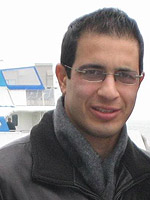
Dr. Babak Moaveni is an Associate Professor at the Department of Civil and Environmental Engineering at Tufts University. He obtained his Ph.D. in Structural Engineering from University of California San Diego, M.S. in Earthquake Engineering and B.S in Civil Engineering both from Sharif University of Technology. His research interests include vibration-based structural health monitoring, system and damage identification of civil structures, experimental modal analysis, signal processing, finite element analysis and finite element model updating, structural dynamics, earthquake engineering, uncertainty quantification, verification and validation of computational models. He is currently serving as the chair of Structural Health Monitoring and Control Committee of the American Society of Civil Engineers (ASCE) and as the associate editor for Structural Health Monitoring and Frontiers in Built Environment journals.
Dr. Pascal Nicolay was born in Metz, France, in 1977. He studied Physics, Innovation Sciences and Engineering. He got his PhD from the University of Lorraine in 2007, and his Habilitation from the University of Technology of Compiègne, in 2018. He has worked for several companies, including TDK-EPCOS (now QUALCOMM) and CTR (Carinthian Tech Research). He’s currently a Senior Researcher and R&D project manager at CTR, with a focus on the development of Surface Acoustic Wave (SAW) sensors and RF filters, for various industrial and research applications. He is the co-author of more than 50 scientific papers and communications, in the field of SAW devices.
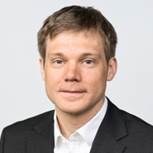
Dr. Michael Ortner studied theoretical physics at the Technical University of Vienna and subsequently did his PhD at the Institute for Quantum Optics and Quantum Information in Innsbruck. In 2012 he started as a researcher at the Carinthian Tech Research Institute working on magnetics and magnetic sensor systems with focus on analytical approaches and numerical simulation.
List of Keynotes & Videos
Keynotes
Integration of Sensor Data with Physics-based Models for Performance Assessment of Civil Structures
Relate Paper:
Integration of Sensor Data with Physics-based Models for Performance Assessment of Civil Structures
Sensors for Industrial Applications – A Short Review of Surface Acoustic Wave and Magnetic Sensors and Systems
Relate Papers:
Wireless and passive SAW devices, for Structural Health Monitoring applications
Magnetic Sensor System Design, Theory and Applications
Videos
Full-scale Testing of a Masonry Building Monitored with Smart Brick Sensors
Relate Paper:
Full-scale testing of a masonry building monitored with smart brick sensors
Instructions for Authors
Submissions should be done by the authors online by registering with www.sciforum.net, and using the "Start New Submission" function once logged into system.
- Scholars interested in participating with the conference can submit their abstract (about 200-250 words covering the areas of manuscripts for the proceedings issue) online on this website until 10 September 2018 1 October 2018.
- The Conference Committee will pre-evaluate, based on the submitted abstract, whether a contribution from the authors of the abstract will be welcome for the 5th International Electronic Conference on Sensors and Applications. All authors will be notified by 15 September 2018 5 October 2018 about the acceptance of their abstract.
- If the abstract is accepted for this conference, the author is asked to submit the manuscript, optionally along with a PowerPoint and/or video presentation of his/her paper (only PDF), until the submission deadline of 15 October 2018.
- The conference proceedings papers and presentations will be available on https://ecsa-5.sciforum.net/ for discussion during the time of the conference 15–30 November 2018 and will be published in Journal Proceedings.
- The Open Access Journal Sensors will publish Special Issue of the conference and accepted papers will be published in the proceedings of the conference itself. After the conference, the Conference Committee will select manuscripts that may be included for publication in the Special Issue of the journal Sensors (the submission to the journal is independent from the conference proceedings and will follow the usual process of the journal, including peer-review, APC, etc.).
Manuscripts for the proceedings issue must have the following organization:
First page:
- Title
- Full author names
- Affiliations (including full postal address) and authors' e-mail addresses
- Abstract (200-250 words)
- Keywords
- Introduction
- Methods
- Results and Discussion
- Conclusions
- (Acknowledgements)
- References
Manuscripts should be prepared in MS Word or any other word processor and should be converted to the PDF format before submission. The publication format will be PDF. The manuscript should count at least 3 pages (incl. figures, tables and references) and should not exceed 6 pages.
Authors are encouraged to prepare a presentation in PowerPoint or similar software, to be displayed online along with the Manuscript. Slides, if available, will be displayed directly in the website using Sciforum.net's proprietary slides viewer. Slides can be prepared in exactly the same way as for any traditional conference where research results can be presented. Slides should be converted to the PDF format before submission so that our process can easily and automatically convert them for online displaying.
Besides their active participation within the forum, authors are also encouraged to submit video presentations. If you are interested in submitting, please contact the conference organizer – ecsa@mdpi.com to get to know more about the procedure. This is an unique way of presenting your paper and discuss it with peers from all over the world. Make a difference and join us for this project!
Submission: Manuscripts should be submitted online at www.sciforum.net/login by registering and logging in to this website.
Accepted File Formats
- MS Word: Manuscript prepared in MS Word must be converted into a single file before submission. When preparing manuscripts in MS Word, the Electronic Conference on Sensors and Applications Microsoft Word template file (see download below) must be used. Please do not insert any graphics (schemes, figures, etc.) into a movable frame which can superimpose the text and make the layout very difficult.
- Paper Format: A4 paper format, the printing area is 17.5 cm x 26.2 cm. The margins should be 1.75 cm on each side of the paper (top, bottom, left, and right sides).
- Paper Length: The conference proceedings paper should not be longer than 6 pages. The conference manuscript should be as concise as possible.
- Formatting / Style: The paper style of the Journal Sensors should be followed. You may download the template file to prepare your paper (see above). The full titles and the cited papers must be given. Reference numbers should be placed in square brackets [ ], and placed before the punctuation; for example [4] or [1-3], and all the references should be listed separately and as the last section at the end of the manuscript.
- Authors List and Affiliation Format: Authors' full first and last names must be given. Abbreviated middle name can be added. For papers written by various contributors a corresponding author must be designated. The PubMed/MEDLINE format is used for affiliations: complete street address information including city, zip code, state/province, country, and email address should be added. All authors who contributed significantly to the manuscript (including writing a section) should be listed on the first page of the manuscript, below the title of the article. Other parties, who provided only minor contributions, should be listed under Acknowledgments only. A minor contribution might be a discussion with the author, reading through the draft of the manuscript, or performing English corrections.
- Figures, Schemes and Tables: Authors are encouraged to prepare figures and schemes in color. Full color graphics will be published free of charge. Figure and schemes must be numbered (Figure 1, Scheme I, Figure 2, Scheme II, etc.) and a explanatory title must be added. Tables should be inserted into the main text, and numbers and titles for all tables supplied. All table columns should have an explanatory heading. Please supply legends for all figures, schemes and tables. The legends should be prepared as a separate paragraph of the main text and placed in the main text before a table, a figure or a scheme.
It is the authors' responsibility to identify and declare any personal circumstances or interests that may be perceived as inappropriately influencing the representation or interpretation of clinical research. If there is no conflict, please state here "The authors declare no conflict of interest." This should be conveyed in a separate "Conflict of Interest" statement preceding the "Acknowledgments" and "References" sections at the end of the manuscript. Financial support for the study must be fully disclosed under "Acknowledgments" section.
MDPI, the publisher of the Sciforum.net platform, is an open access publisher. We believe that authors should retain the copyright to their scholarly works. Hence, by submitting a Communication paper to this conference, you retain the copyright of your paper, but you grant MDPI the non-exclusive right to publish this paper online on the Sciforum.net platform. This means you can easily submit your paper to any scientific journal at a later stage and transfer the copyright to its publisher (if required by that publisher).
List of accepted submissions (60)
| Id | Title | Authors | Presentation Video | Poster PDF | |||||||||||||||||||||||||||||||||||||
|---|---|---|---|---|---|---|---|---|---|---|---|---|---|---|---|---|---|---|---|---|---|---|---|---|---|---|---|---|---|---|---|---|---|---|---|---|---|---|---|---|---|
| sciforum-020577 | A microcontroller system for the automation of transient effect determination of the spin-lattice relaxation time using continuous wave NMR | , , | N/A | N/A |
Show Abstract |
||||||||||||||||||||||||||||||||||||
|
The control electronics for low field pulsed NMR systems, commonly referred to as the console, are designed to be wide band and highly programmable. The process of making spin lattice relaxation time (T1) measurements with such a pulsed system usually use recovery sequences that will typically take many minutes to give a single T1 value. A simple transient effect method for the determination of the spin-lattice relaxation time using continuous wave NMR with a marginal oscillator, known as TEDSpiL, was recently reported (doi:10.1002/mrc.4594). Such a system measures a parameter, called Tx, that is related to T1 and allows T1 to be determined with the aid of calibration samples. For such a system, the process of making the Tx measurement only takes a few seconds and does not require variable parameters so is ideal for implementing in microcontroller code. In this presentation, we demonstrate that TEDSpiL may be automated using two microcontrollers from the Teensy family. One microcontroller is used to generate a magnetic field sweep voltage and a trigger pulse for the second microcontroller that is used to record the data and calculate the value of Tx. Whilst the Tx value is not a direct equivalent for T1, there are applications where such a method may provide a suitable cost effective, low power and portable measurement technique. |
|||||||||||||||||||||||||||||||||||||||||
| sciforum-021127 | Honey bee vibration monitoring using the 805M1 accelerometer | , | N/A | N/A |
Show Abstract |
||||||||||||||||||||||||||||||||||||
|
The use of accelerometers to obtain information on the state of honeybee colonies has several advantages over sound recorded by microphones, in that (i) accelerometers can reside in a honeybee hive for several years with a negligible effect of propolis coating (ii) they are particularly good at monitoring the low frequency signals which form a large part of the honeybee communication processes, and (iii) they sense a physical property, the vibration, that is probably far more relevant to them than sounds. One example of accelerometers allowing the observation of specific vibrational communication signals has been reported for the ‘whooping signal’ (doi: 10.1371/journal.pone.0171162). The vibrational amplitude is also dependent on the local environment/substrate and this has been demonstrated to be a strong indicator of an active queen (doi:10.1371/journal.pone.0141926). These previous reports have used ultra-high performance accelerometers (Brüel and Kjær, 4507) which also require separate signal conditioning electronics before the vibrational data can be logged; this represents a very expensive arrangement that precludes wide deployment. In this work we demonstrate that the 805M1 single axis analogue output accelerometer, that incorporates a piezo-ceramic crystal with low power electronics in a shielded housing, can be used to monitor honey bee activity and requires only a low cost microcontroller with an audio shield to log the data. We present high quality accelerometer output signals for both individual bee pulses and long term amplitude monitoring using this affordable measurement system. The signals appear of similar quality to those acquired with ten fold more expensive equipment. |
|||||||||||||||||||||||||||||||||||||||||
| sciforum-021243 | High sensitivity optical sensing based on modal interferences in one-dimensional photonic crystals | , | N/A | N/A |
Show Abstract |
||||||||||||||||||||||||||||||||||||
|
Optical integrated sensors, such as Mach-Zehnder Interferometers (MZI), offer remarkable advantages in terms of sensitivity and compactness for label-free bio-sensing applications [1-2], although they need from additional structures and long arms to perform the sensing. In this work, we report a new interferometric sensing method encompassing the benefits of MZIs while reducing the footprint of the integrated device. This new approach is based on the interference between two Bloch modes propagating through a single-channel and one-dimensional photonic crystal, where the slow-wave effect takes place. The principle of operation is the following: a single-mode waveguide working in TE polarization excites two modes, which interfere with each other by an abrupt discontinuity into the second single-mode waveguide at the output. For a given variation of the cladding refractive index unit (RIU), the propagation constant of the guided modes changes, producing an increase in the phase shift. Due to the slow-wave phenomenon whereby light travels slower than in other structures, good values of sensitivity are obtained for short device lengths in comparison to other interferometers and without the necessity of long modal sections to achieve enough phase shift (dimensions around 35 microns) . In summary, this approach could result in novel interferometric sensing structures for lab-on-a-chip integrated devices and other bio-sensing applications. [1] Q. Liu, X. Tu, K. W. Kim, J. S. Kee, Y. Shin, K. Han, Y. J. Yoon, G. Q. Lo, and M. K. Park, Sensors Actuators, B Chem. 188, 681 (2013). [2] Q. Kun, H. Shuren, and S. T., Opt. Lett. 1 (2016). [3] K. E. Zinoviev, A. B. González-Guerrero, C. Domínguez, and L. M. Lechuga, J. Light. Technol. 29, 1926 (2011). |
|||||||||||||||||||||||||||||||||||||||||
| sciforum-021278 | Pore morphology of heavily doped p-type porous silicon | , , | N/A | N/A |
Show Abstract |
||||||||||||||||||||||||||||||||||||
|
Porous silicon (PS) is a nanostructured material generated by electrochemically etching silicon in electrolytes containing hydrofluoric acid (HF) with many potential application areas such as optoelectronics and biosensing. PS retains the advantages of silicon technology while adding the ability of controlling optical properties. Fabry-Pérot interferometers, Fabry-Pérot filters or distributed Bragg reflectors are some of the 1D structures that have been fabricated in PS under different etching conditions, e.g. changing anodization current and concentration of HF. Tuning pore diameter is essential for some applications in which substances must be flown through the pores, so that a size-based filtering of the molecules can be done. However, macropore (>50nm) formation on p-type silicon is still poorly known due to the strong dependence with resistivity [1]. Electrochemically etching heavily doped p-type silicon usually forms micropores (<10nm) but it has been found that bigger sizes can be achieved by adding a solvent to the electrolyte (aqueous or organic). In this work we present the results of using dimethylformamide (DMF), dimethylsulfoxide (DMSO), potasium hydroxide (KOH) and sodium hydroxide (NaOH) for macropore formation in p-type silicon with resistivities between 0.001 and 9 Ω∙cm, achieving pore size range from 5 to 100nm. [1] G.X. Zhang, Porous silicon: morphology and formation mechanisms, Modern Aspects of Electrochemistry, number 39, edited by C. Vayenas et al., Springer, New York, 2005. |
|||||||||||||||||||||||||||||||||||||||||
| sciforum-021282 | Commercial Track-Etched Polycarbonate Membrane as Optical Chemical Sensors | , | N/A | N/A |
Show Abstract |
||||||||||||||||||||||||||||||||||||
|
Track-etched polycarbonate membranes (TEPM) are commercially available membranes typically used in particle filtration due to the pores present in their surfaces. This porous structure reminds of that of a Fabry-Pérot interferometer made on porous silicon, an optical structure long employed in optical chemical sensing. Because of this morphological similarity, we hypothesized that TEPM could exhibit a similar optical response and thus being useful for creating simpler to fabricate, easily available and low cost chemical sensors. To asses this hypothesis, we investigated the optical response of TEPM in the infrared range, improved it by chemically attaching the membranes to a silicon flat surface and then, performed reflectivity measurements in presence of different concentrations of ethanol. When exposing a TEPM to a change of the refractive index of the medium it is surrounded by (air) by placing a drop of ethanol, with a higher refractive index, we can observe a shift of its spectrum towards higher wavelengths. This indicates the presence of the solvent, and we could check that the bigger the concentration, the bigger the magnitude of that shift. Furthermore, when the solvent is evaporated the spectrum returns to its initial position, which allowed us to perform different concentration sensing steps using the same sample. These promising results, although early, could indicate the utility of these membranes to easily fabricate cheap chemical sensors and, probably, optical biosensors as their surface can be chemically modified. |
|||||||||||||||||||||||||||||||||||||||||
Keynote Presentations
Conference Secretariat
Dr. Lily Sun
MDPI Branch Office, Beijing
E-Mail: ecsa@mdpi.com
Ms. Nora Zhang
MDPI Branch Office, Beijing
E-Mail: ecsa@mdpi.com
Sponsoring Opportunities
For information regarding sponsoring opportunities, please contact the conference secretariat.
Conference Schedule
Abstract Submission: 10 September 2018 1 October 2018
Notification of Acceptance: 15 September 2018 5 October 2018
Paper Submission Deadline: 15 October 2018
Conference Open: 15-30 November 2018
A. Chemo and Biosensors
Session Chairs
Dr. Stefano Mariani, Department of Civil and Environmental Engineering, Politecnico di Milano, Italy
Dr. Francesco Ciucci, Hong Kong University of Science and Technology, China
Show all published submissions (5) Hide published submissions (5)
Submissions
List of Papers (5) Toggle list
B. Physical Sensors
Session Chairs
Dr. Dirk Lehmhus, ISIS Sensorial Materials Scientific Centre, University of Bremen, 28359 Bremen, Germany
Dr. Alberto Vallan, Department of Electronics and Telecommunications, Politecnico di Torino, Italy
Show all published submissions (9) Hide published submissions (9)
Submissions
List of Papers (9) Toggle list
C. Sensors networks
Session Chair
Dr. Francisco Falcone, Department of Electrical and Electronic Engineering, Public University of Navarre, Pamplona, Spain
Show all published submissions (5) Hide published submissions (5)
Submissions
List of Papers (5) Toggle list
D. Applications
Session Chairs
Dr. Thomas B. Messervey, CEO and Co-Founder, Research to Market Solution s.r.l., Italy
Dr. Stefano Mariani, Department of Civil and Environmental Engineering, Politecnico di Milano, Italy
Show all published submissions (22) Hide published submissions (22)
Submissions
List of Papers (22) Toggle list
P. Posters
Show all published submissions (1) Hide published submissions (1)
Submissions
List of Papers (1) Toggle list
S1. Smart Cities
Sensors, sensor networks and the information they provide are the fundamental building block of smart cities and everything they have to offer toward improving the quality of life. This session encourages researchers worldwide to share their sensors and applications related to smart cities as we build the urban future of tomorrow. Topics are not limited to but could include submissions related to:
- Smart buildings and district heating/cooling
- Smart grids
- Smart water
- Environmental monitoring
- Transport, infrastructure & mobility
- Internet of Things (IoT) and protocols they operate within
- Sensors to empower citizens and improve quality of life
- Sensors to improve and make efficient public services and emergency services
Session Chair
Dr. Thomas B. Messervey, CEO and Co-Founder, Research to Market Solution s.r.l., Italy
Show all published submissions (3) Hide published submissions (3)
Submissions
List of Papers (3) Toggle list
S2. Smart Sensing Systems and Structures
Trends emerging in engineering and micro-system applications such as the development of sensorial materials show a growing demand for distributed autonomous computing in sensor networks consisting of miniaturized low-power smart sensors embedded in technical structures. A Sensor Network is composed of nodes capable of sensor processing and communication. Smart Systems are composed of more complex networks (and networks of networks) differing significantly in computational power and available resources. They provide higher level information processing that maps the raw sensor data to condensed information. They can provide, for example, Internet connectivity of perceptive systems (body area networks...). These smart systems unite the traditionally separated sensing, aggregation, and application levels, offering a more unified design approach and more generic and unified architectures. Smart systems glue software and hardware components to an extended operational unit.
Smart can be defined on different operational and processing levels and having different goals in mind. One aspect is the adaptivity and reliability in the presence of sensor, communication, node, and network failures that should not compromise the trust and quality of the computed information, for example, the output of a Structural Health Monitoring System (SHM). A Smart System can be considered on node, network, and network of network level. Another aspect of "smartness" is information processing with inaccurate or incomplete models (mechanical, technical, physical) requiring machine learning approaches, either supervised with training at design-time or unsupervised based on reward learning at run-time.
Growing system complexity requires an increase in autonomy of distributed data processing systems, addressed, for example, by the deployment of mobile multi-agent systems carrying and processing information. Self-organizing systems are one major approach to solve complex tasks by decomposing them into smaller and simpler task performed by a large group of individuals.
Smart "Functional" Structures extend classical perceptive systems with actuators responding to changes in the environment or load conditions in real-time, enabling Reactive Perceptive Systems.
Topics included but not limited to are:
- Software engineering for sensing applications and sensor clouds
- Data mining in sensing applications
- Autonomous computing systems
- Multi-agent systems and intelligent computing
- Machine learning supporting sensing applications
- Ubiquitous smart systems and applications
- Sensor cloud, cluster and grid computing
- Internet of Things
- Human-computer, human-sensing, and human-machine interaction
- Machine-to-Machine (M2M) networks
- Service-orientated information processing and computing
- Reliable and fault-tolerant system design and algorithms
- Platform design and architectures
- Active perceptive systems coupling sensing + actuation including robotic systems
Session Chairs
Dr. Dirk Lehmhus, ISIS Sensorial Materials Scientific Centre, University of Bremen, 28359 Bremen, Germany
Dr. Stefan Bosse, Department of Computer Science, Workgroup Robotics, University of Bremen, Bremen, Germany
Show all published submissions (3) Hide published submissions (3)
Submissions
List of Papers (3) Toggle list
S3. Structural Health Monitoring Technologies and Sensor Networks
Structural health monitoring of aerospace, civil and mechanical structures and components is becoming increasingly relevant to minimize maintenance costs, to enable an effective preventive conservation and to provide additional layers of safety for the users. This session focuses on the progress of existing or novel sensing technologies including synergies among sensing approaches and algorithms for structural diagnosis and prognosis. All sensing mechanisms including piezoelectrics, piezoresistive, electrostrictives, magnetostrictives, shape memory alloys or polymers and optical and others are included in this session. The presentations will highlight experimental studies and computational approaches that include applications. Data fusion, machine learning, networking and computing of large amounts of data that are geared towards structural health monitoring applications are also encouraged in this session.
Session Chairs
Dr. Filippo Ubertini, Department of Civil and Environmental Engineering, University of Perugia, Perugia, Italy
Dr. Jandro L. Abot, Department of Mechanical Engineering, The Catholic University of America, Washington, DC, USA
Show all published submissions (8) Hide published submissions (8)
Submissions
List of Papers (8) Toggle list
S4. Wearable Sensors
The market and the applications of wearable sensors are rapidly growing thanks to the widespread availability of miniaturized sensors having reduced power consumption and wide interfacing capabilities. Relevant applications of wearable sensors can be found in our everyday life both for scientific and non-scientific purposes, such as the monitoring of physiological parameters for heath and for fitness assessment. Perspective authors are invited to submit original contributions concerning all the aspects of wearable sensors. Topics include, but are not limited to:
- Development and advances of sensor technology for wearable systems: inertial, bio-chemical, optical, …
- power management and energy harvesting
- flexible sensors and related electronics and circuits
- Characterization and calibration of wearable sensors
- textile integration of sensors and electronics
- wearable sensor interfaces, wireless communications and networks
- smart wearable sensors
- wearable sensor for e-health, security , sport and gaming
- activity and fitness trackers
- smartwatches and smartwatches applications
- sensor integration with smartphones
Session Chair
Dr. Alberto Vallan, Department of Electronics and Telecommunications, Politecnico di Torino, Italy
Show all published submissions (4) Hide published submissions (4)
Submissions
List of Papers (4) Toggle list




